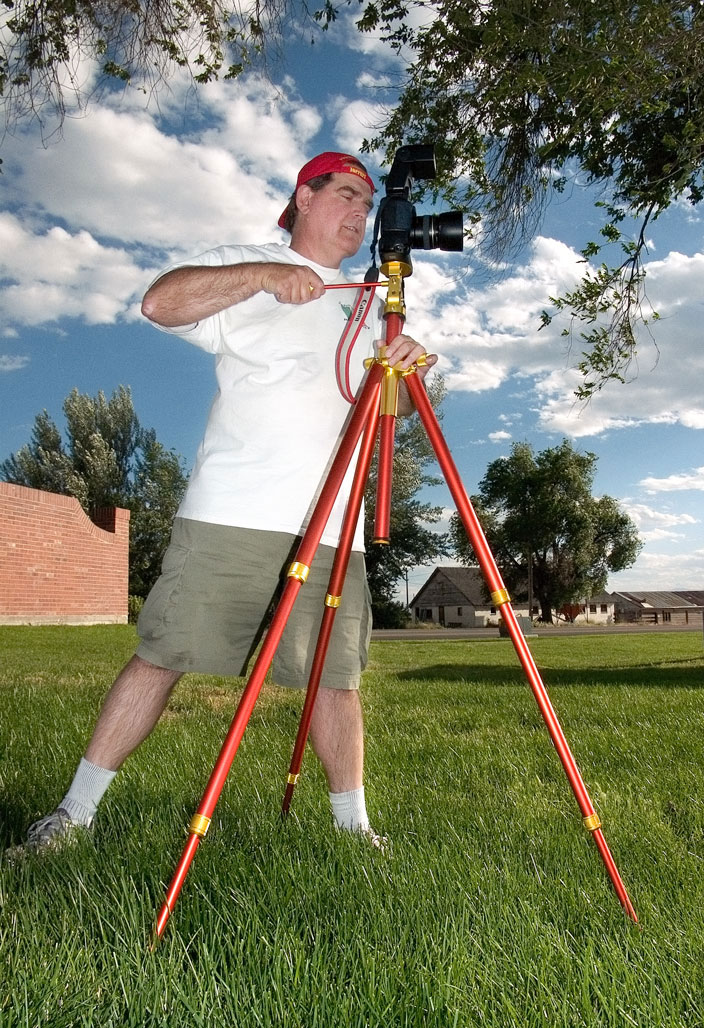Today’s Post by Joe Farace
“You Meet the Nicest People on a Honda,” from Honda’s 1960’s motorcycle’s ad.
I think you also meet the nicest people when shooting with a tripod. Once when I was at McCabe Meadows shooting infrared images with the Pentax K-1, a women who was carrying a DSLR asked, “what’s up there?” I held up the IR filter I was using and told her I was making an infrared picture of the tree. We had a pleasant chat and within a few seconds a cyclist passes by, stops and asking “is there a nest up there?” And so I explain it to him too…
 Tripods come in many sizes from tiny tabletop models to heavy-duty camera stands for studio use. Because of the availability of so many types, sizes, construction materials, styles and even colors, like my custom Tiltall, there’s no one-size-fits-all solution, and like eating potato chips you can’t have just one. That’s why most of us end up with a collection of camera supports with different tripods used for different kind of tasks.
Tripods come in many sizes from tiny tabletop models to heavy-duty camera stands for studio use. Because of the availability of so many types, sizes, construction materials, styles and even colors, like my custom Tiltall, there’s no one-size-fits-all solution, and like eating potato chips you can’t have just one. That’s why most of us end up with a collection of camera supports with different tripods used for different kind of tasks.
In this day of image stabilized lenses as well as IBIS, you might wonder if you even need a tripod? I think so and let me tell you why:
- Holding it steady. The average person can usually handhold a camera at a shutter speeds are equal to the reciprocal of the focal length of the lens used. But this may all change in the near future with new cameras like Olympus’ new E-M1X that let me handhold this gazebo photo for an exposure of 4 sec at f/8 and ISO 200.
- Portraits: Some photographers, like my friend Cliff and my wife Mary, prefer to have their cameras on a tripod when shooting portraits so the subject can look at them instead of seeing a face blocked by a camera.
- Increase depth-of-field: When you want to work at smaller apertures for landscape images but also for macro shots, you’ll probably need a tripod to hold the camera steady.
- Photography with Filters: Infrared photography requires filters that are seemingly opaque and have filter factors approaching infinity producing slow shutter speeds even the best anti-shake or image stabilization technologies can’t handle, at least so far.
Using a tripod enforces a more deliberate approach to making photographs and having to think about a photograph’s composition before banging off a few frames will improve the quality of your images more than you might imagine. A tripod is also the sign of a serious photographer and people will sometimes move out of the way when they see a photographer with a tripod.
 If you enjoyed today’s blog post and would like to treat Joe to a cup of Earl Grey tea ($2.50), click here. And if you do, many thanks.
If you enjoyed today’s blog post and would like to treat Joe to a cup of Earl Grey tea ($2.50), click here. And if you do, many thanks.
Along with photographer Barry Staver, Joe is co-author of Better Available Light Digital Photography that’s out-of-print but new copies are available for $21.50 or used copies starting around nine bucks—from Amazon, as I write this.